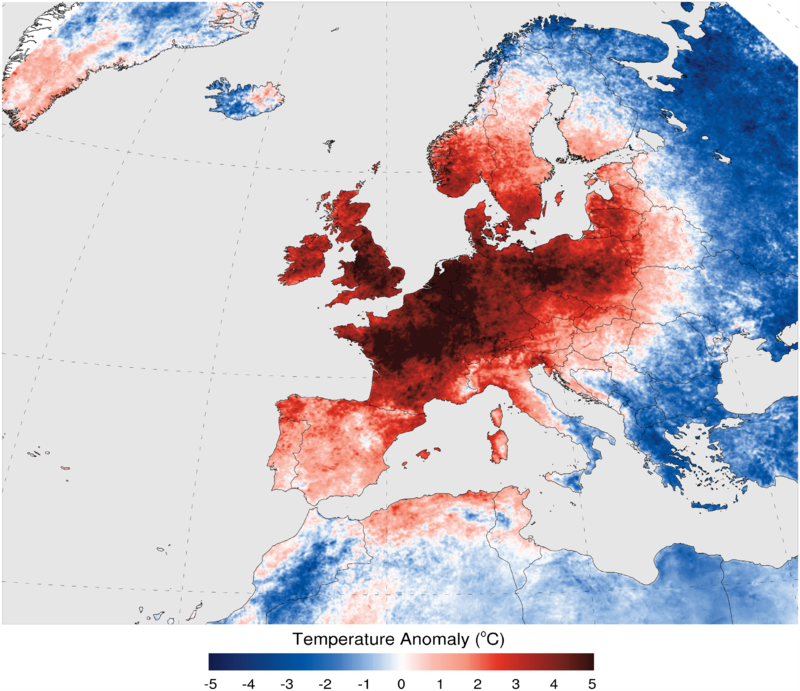 Diane Depra in Tech Times: The Met Office released a study in 2004 about the extreme heatwave that hit Europe the previous year, finding that the event is now more than twice likely to happen because of the influence of humans on climate. The National Weather Service updated the 2004 study by exploring how hot weather chances in Mediterranean and Central Europe have changed over the course of a decade.
Diane Depra in Tech Times: The Met Office released a study in 2004 about the extreme heatwave that hit Europe the previous year, finding that the event is now more than twice likely to happen because of the influence of humans on climate. The National Weather Service updated the 2004 study by exploring how hot weather chances in Mediterranean and Central Europe have changed over the course of a decade.Published in the journal Nature Climate Change, the new study focused on summers from 2003 to 2012. Comparing the period covered by the first study (the 1990s) and the focus of the new study, researchers found that summers have become warmer by 0.81 ºC or 33.4 ºF in Mediterranean and Central Europe, increasing the likelihood of summer and extreme heatwaves happening in the regions affected.
Summer heatwaves are defined as having temperatures of 1.6 ºC or 33.9 ºF over the long-term average set between 1961 and 1990, while extreme heatwaves are 2.3 ºC or 36.1 ºF above the said average.
According to Dr. Nikos Christidis, the study's lead author, extremely hot summers that were once expected to happen twice in a century during the early 2000s are highly likely to occur more frequently now. How frequently? Expect extremely hot summers about twice every 10 years.
"Moreover, the chances of heatwaves as extreme as seen in 2003 have increased from about 1-in-1000 to about 1-in100 years and are projected to occur once every other year by the 2030s-2040s under continuing greenhouse gas emissions," Dr. Christidis added...



No comments:
Post a Comment